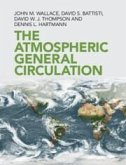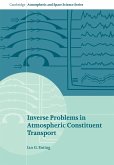A quantitative introduction to the Earth's atmosphere for intermediate-advanced undergraduate and graduate students, with an emphasis on underlying physical principles. This edition has been brought up-to-date, and now includes a completely new chapter on the physics of climate change. Student exercises, with solutions, are made available online.
'... I strongly recommend [this] book, both because there is no other recent text that covers the same material and because of the high quality ... The author does an exceptional job of organising the presentation of complex material, and manages to explain it in terms that are accessible to undergraduates and more senior students, as well as people with a more casual interest in the topics who seek a basic understanding of the physical principles.' Bulletin of the American Meteorological Society









